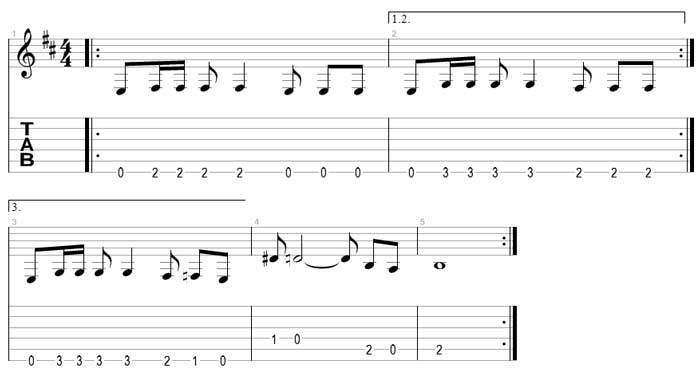Learning guitar chords is one of the first things you will learn when starting guitar. If you plan on teaching yourself how to play, there are a few different ways you can learn guitar chords at home. In this article we will look at how you can teach yourself guitar chords at home using a few simple methods. If you have a teacher and are looking at other ways to learn chords, then these methods will help you out too.
Following a method vs just playing chords
Quite often when beginners ask me for help on how to teach themselves to play, they often mention that they just play the chords until it works. This is a problem many self taught guitarists face – they don’t realize there’s better ways to learn. If you’re currently teaching yourself how to play guitar or thinking about teaching yourself, keep in mind that unless you follow a method it’s going to be a long and hard process. ‘Just playing chords until it works’ is a long and frustrating way to learn chords. Learning guitar using this trial and error approach takes a lot longer than following methods that have been proven to work.
When you follow a method you have the piece of mind knowing that it’s worked for other people before you. Instead of guessing what to do you can simply follow the steps given. Following a method allows you to completely focus on what you’re doing instead of thinking the whole time ‘is this going to work?’ Next time you want to learn a new technique on guitar, try to find a method or practice plan that other people have used before. You will save a lot of time doing this and you will learn faster and easier as a result.
What you need to learn guitar chords at home
As explained above you need a method to follow to learn guitar chords on your own. You’re going to learn a lot faster with a method instead of just trying to play songs. The next thing you will need is a wide range of guitar chords to learn. Rather than figure out on your own which guitar chords you should learn, having a set of easy guitar chords picked out for beginners will save you a lot of headaches. Our flash cards pack, 50 Essential Chords, was developed to contain 50 easy guitar chords that any beginner can learn. Using this resource will help you learn guitar chords faster because you will have 50 chords already chosen for you.
The last thing you will need to learn guitar chords is patience. Don’t underestimate how important this one is. If you expect to learn all 50 chords in a couple of days then you’re just going to get frustrated. Learning guitar is always hardest at the very beginning because everything feels impossible. The first time you try to play chords it will seem like your fingers can’t stretch that far and the chords just don’t sound right when you play them. But if you have patience, you will know that in time it will get easier and eventually you will be able to play them. Having patience is the key to becoming a pro at guitar.
How to learn 50 chords in 10 minutes a day
We have put together a method to help beginners learn guitar chords at home in 10 minutes a day. If you set aside 10 minutes every day for some solid practice, you will learn guitar chords faster than you might think. Our method breaks the practice down into simple steps that focus on each chord to help you learn in the most efficient way. Read through the method here and download the pdf. The pdf contains a breakdown of what to practice and you can print it out and stick it up on your wall to help you remember what to practice. We have had great feedback from beginners who used this method and managed to eventually memorize all 50 chords.
A quick checklist
So what do you really need to learn guitar chords at home? Here’s a quick checklist on the essentials.
Notice how short the list is and how simple it sounds. The reason so many beginners get stuck is because they don’t consider what actually works. When you take a trial and error approach and just play the chords it’s going to take a lot longer than focusing on one simple method.
What to do after you learn the chords
Once you do learn some chords on your own, it’s time to start applying them. Here’s a quick list of things you can try after you learn some basic chords:
There are many more different ways you can use chords but if you give these a go you’ll start to enjoy using chords and your playing will start to improve at a faster pace. Don’t underestimate the value in these simple steps – there isn’t any secret shortcut – simply follow the steps in the method and you’ll learn the chords in no time at all.




